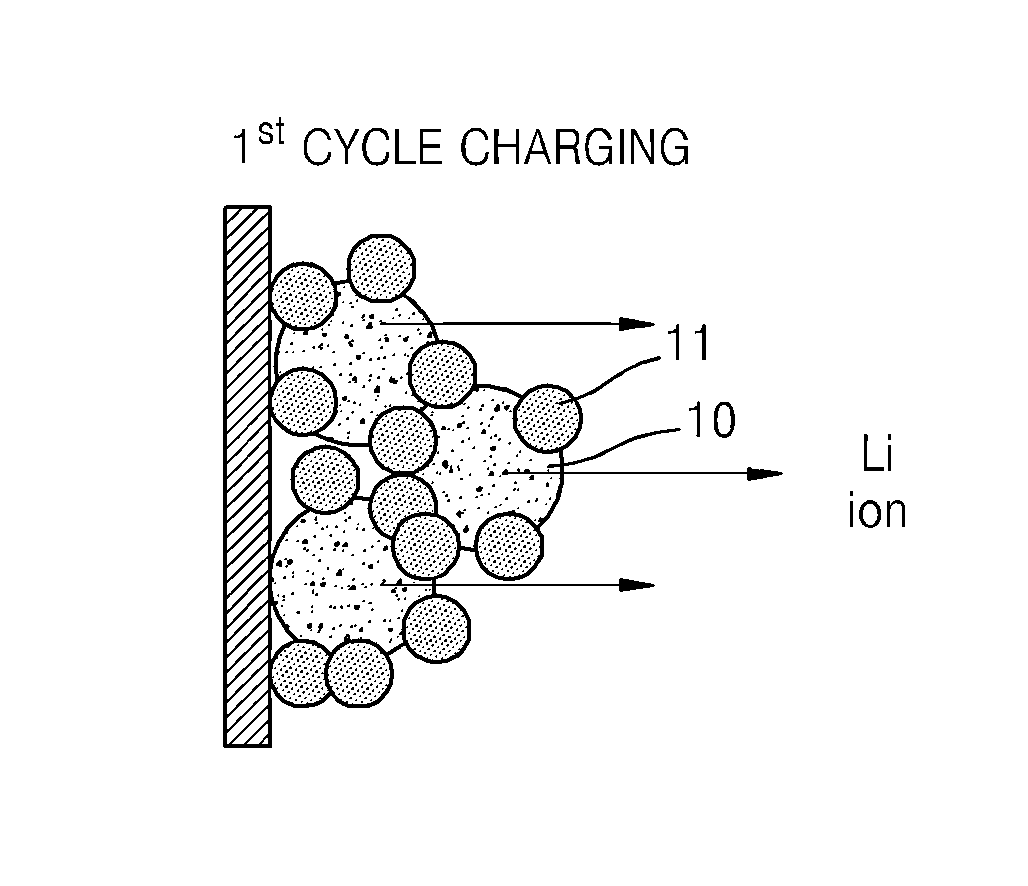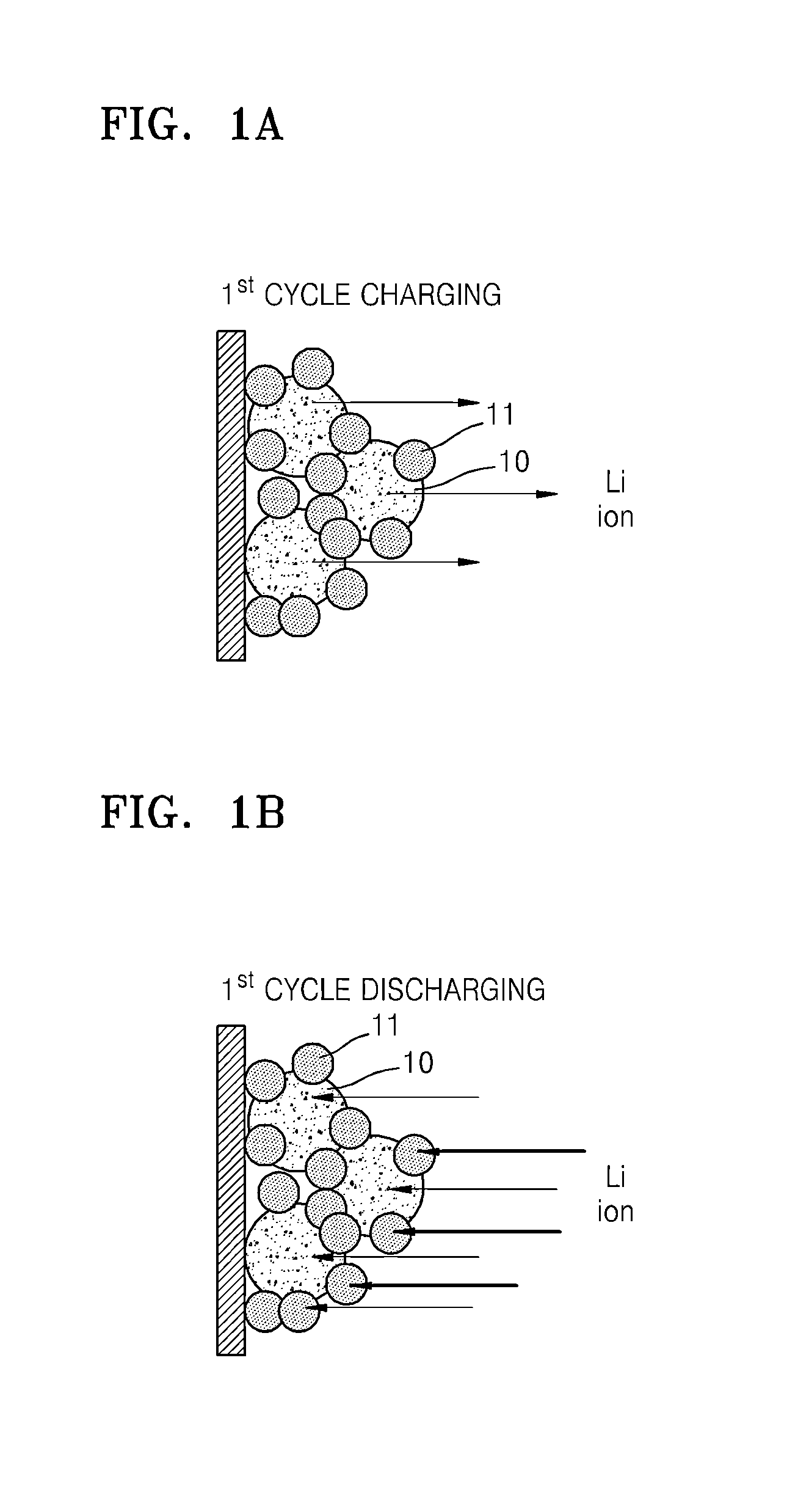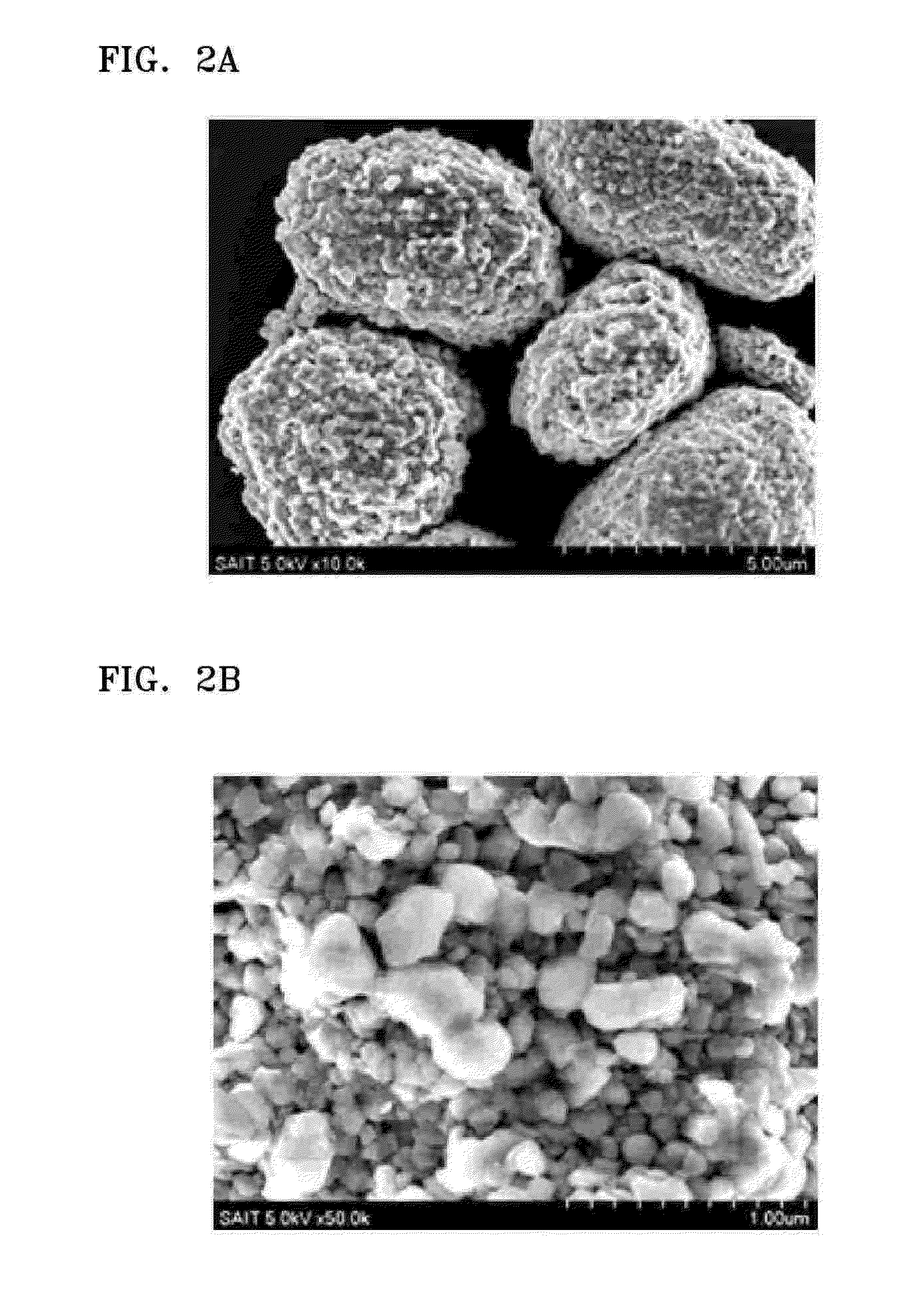Positive active material, method of preparing the same, and lithium battery including the positive active material
a lithium battery and positive active material technology, applied in the manufacture of final products, cell components, electrochemical generators, etc., can solve the problems of reducing high-temperature charging/discharging capacity, low initial efficiency of high-voltage positive active materials, and reducing so as to improve the initial efficiency and high-temperature stability of lithium batteries. , the effect of high capacity
- Summary
- Abstract
- Description
- Claims
- Application Information
AI Technical Summary
Benefits of technology
Problems solved by technology
Method used
Image
Examples
example 4
Positive Active Material as Mixture of Lithium-Containing Oxide Particles and Lithium-Intercalatable Phosphate Compound
[0134]A positive active material was prepared in the same manner as in Example 1, except that 20 parts by weight of the δ-phase VOPO4, instead of 0.5 parts by weight of the δ-phase VOPO4, based on 100 parts by weight of the Li1.18Ni0.17Co0.1 Mn0.56O2 particles, was mixed together with the Li1.18Ni0.17Co0.1Mn0.56O2 particles using a mortar.
example 5
Positive Active Material as Mixture of Lithium-Containing Oxide Particles and Lithium-Intercalatable Phosphate Compound
[0135]A positive active material was prepared in the same manner as in Example 1, except that 30 parts by weight of the δ-phase VOPO4, instead of 0.5 parts by weight of the δ-phase VOPO4, based on 100 parts by weight of the Li1.18Ni0.17Co0.1Mn0.56O2 particles, was mixed together with the Li1.18Ni0.17Co0.1Mn0.56O2 particles using a mortar.
example 6
Positive Active Material with Coating of Lithium-Intercalatable Phosphate Compound on Lithium-Containing Oxide Particle Surfaces
[0136]A 2M nickel sulfate aqueous solution (NiSO4.6H2O), available from Aldrich), a 2M cobalt sulfate aqueous solution (CoSO4.7H2O), available from Aldrich), and a 2M manganese sulfate aqueous solution (MnSO4.xH2O), available from Aldrich) were prepared. Afterward, the nickel sulfate aqueous solution, the cobalt sulfate aqueous solution, and the manganese sulfate aqueous solution were mixed to obtain a mixed solution with a mole ratio of nickel, cobalt, and manganese of 0.17:0.1:0.56. The mixed solution was put into 4 L of a 0.2M NH4OH solution along with a 2M Na2CO3 aqueous solution at a rate of 3 mL / min, reacted together for about 10 hours while being maintained at pH 8, and then filtered to obtain a precipitate, which was then washed with water and dried. The resulting product was mixed with Li2CO3 (available from Aldrich) to have a mole ratio of Li:Ni:C...
PUM
| Property | Measurement | Unit |
|---|---|---|
| particle diameter | aaaaa | aaaaa |
| particle diameter | aaaaa | aaaaa |
| ionic diameter | aaaaa | aaaaa |
Abstract
Description
Claims
Application Information
 Login to View More
Login to View More - R&D
- Intellectual Property
- Life Sciences
- Materials
- Tech Scout
- Unparalleled Data Quality
- Higher Quality Content
- 60% Fewer Hallucinations
Browse by: Latest US Patents, China's latest patents, Technical Efficacy Thesaurus, Application Domain, Technology Topic, Popular Technical Reports.
© 2025 PatSnap. All rights reserved.Legal|Privacy policy|Modern Slavery Act Transparency Statement|Sitemap|About US| Contact US: help@patsnap.com



